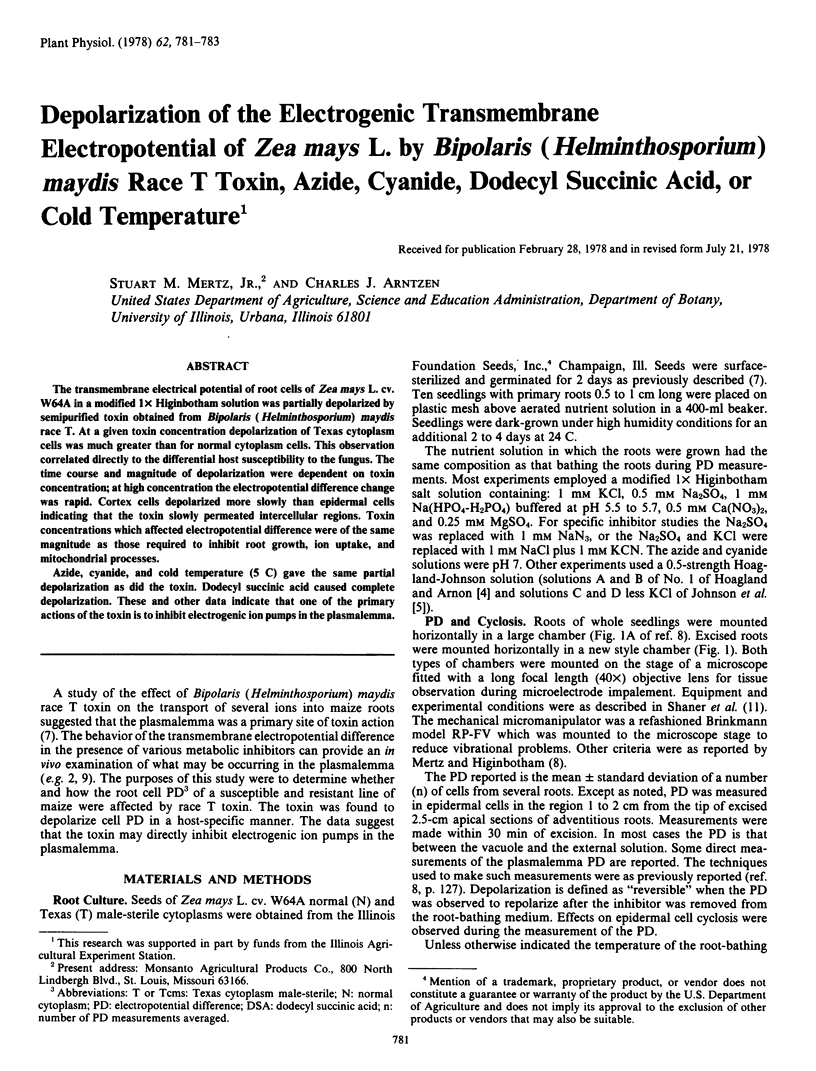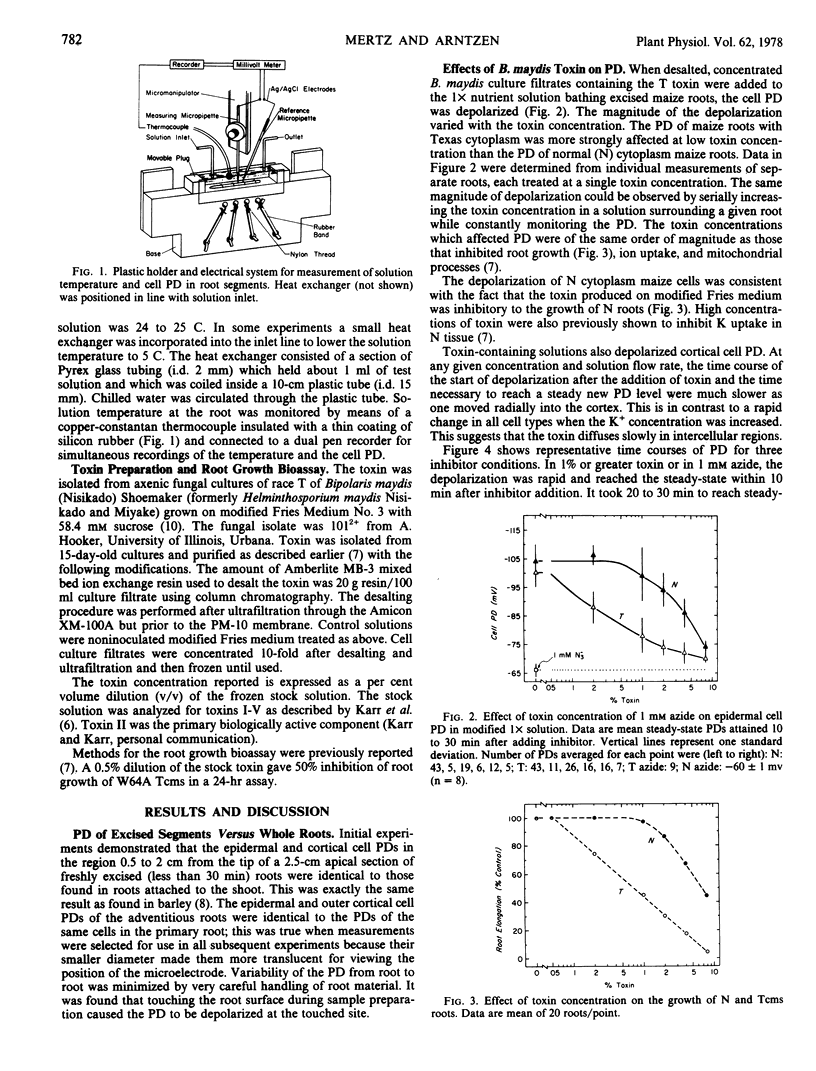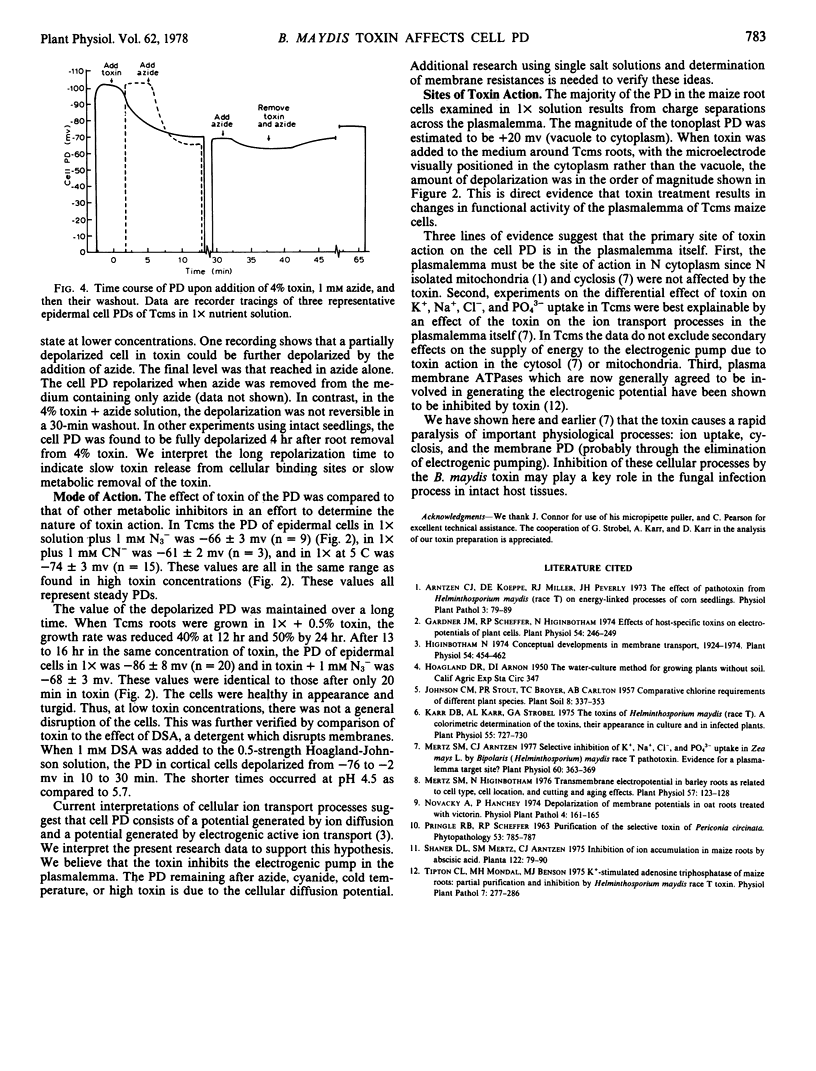Abstract
The transmembrane electrical potential of root cells of Zea mays L. cv. W64A in a modified 1× Higinbotham solution was partially depolarized by semipurified toxin obtained from Bipolaris (Helminthosporium) maydis race T. At a given toxin concentration depolarization of Texas cytoplasm cells was much greater than for normal cytoplasm cells. This observation correlated directly to the differential host susceptibility to the fungus. The time course and magnitude of depolarization were dependent on toxin concentration; at high concentration the electropotential difference change was rapid. Cortex cells depolarized more slowly than epidermal cells indicating that the toxin slowly permeated intercellular regions. Toxin concentrations which affected electropotential difference were of the same magnitude as those required to inhibit root growth, ion uptake, and mitochondrial processes.
Azide, cyanide, and cold temperature (5 C) gave the same partial depolarization as did the toxin. Dodecyl succinic acid caused complete depolarization. These and other data indicate that one of the primary actions of the toxin is to inhibit electrogenic ion pumps in the plasmalemma.
Full text
PDF


Selected References
These references are in PubMed. This may not be the complete list of references from this article.
- Gardner J. M. Effects of host-specific toxins on electropotentials of plant cells. Plant Physiol. 1974 Sep;54(3):246–249. doi: 10.1104/pp.54.3.246. [DOI] [PMC free article] [PubMed] [Google Scholar]
- Higinbotham N. Conceptual developments in membrane transport, 1924-1974. Plant Physiol. 1974 Oct;54(4):454–462. doi: 10.1104/pp.54.4.454. [DOI] [PMC free article] [PubMed] [Google Scholar]
- Karr D. B., Karr A. L., Strobel G. A. The Toxins of Helminthosporium maydis (Race T) : A Colorimetric Determination of the Toxins, Their Appearance in Culture and in Infected Plants. Plant Physiol. 1975 Apr;55(4):727–730. doi: 10.1104/pp.55.4.727. [DOI] [PMC free article] [PubMed] [Google Scholar]
- Mertz S. M., Arntzen C. J. Selective Inhibition of K, Na, Cl, and PO(4) Uptake in Zea mays L. by Bipolaris (Helminthosporium) maydis Race T Pathotoxin: Evidence for a Plasmalemma Target Site? Plant Physiol. 1977 Sep;60(3):363–369. doi: 10.1104/pp.60.3.363. [DOI] [PMC free article] [PubMed] [Google Scholar]
- Mertz S. M., Higinbotham N. Transmembrane electropotential in barley roots as related to cell type, cell location, and cutting and aging effects. Plant Physiol. 1976 Feb;57(2):123–128. doi: 10.1104/pp.57.2.123. [DOI] [PMC free article] [PubMed] [Google Scholar]


